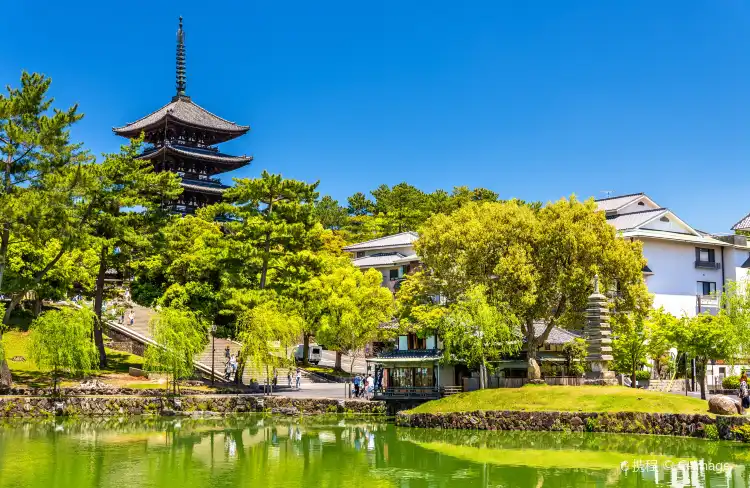
Search Nara Hotels
Enter your dates for the latest hotel rates and availability.
Swipe up to view more
Filter by:
Hotel Star Rating
≤2345
Popular Filters
9+8+7+6+We found 150 hotels for you in Nara
Choose your travel dates to see the latest prices and deals.
Most Booked
Lowest Price
Closest to Downtown
Highest Rated
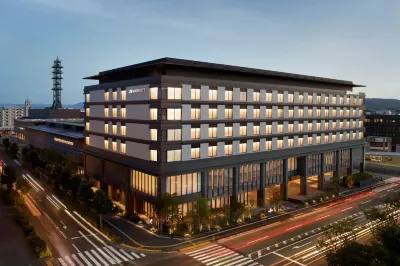

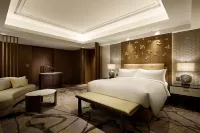
99+
Hotel near Nara
"My best appraise is for the services in both of reception and restaurant, especially the staffs from Nepal and Max from Indonesia. Many thanks for the sincere service and patience to my naughty boy, he missed you a lot and he promised to come again next year to see you then. For me, the soundproofing effectiveness is really not friendly, I woke up by the car noises outside many time in the nite😭"
Outstanding
82 reviews
9.5/10
1 night
From NZD 264



94
Hotel near Nara
"The scenery is beautiful, and the bed is more comfortable than expected. We booked a loft and two double rooms. The loft has a courtyard and a terrace bathtub, and the hot spring ends at 0 o'clock. There are a lot of tableware for dinner and breakfast, but they are too exquisite and I didn't eat enough. It's just average. The bathroom shower is also clean. The hotel provides kimonos for free. It's fun to wear kimonos and drink and chat in the room. There are Chinese waiters. If you bring your own wine, you will be charged a corkage fee of 2,000 yen/bottle. In the morning, after going down the mountain, you will see the deer park."
68 reviews
8.9/10
1 night
From NZD 363
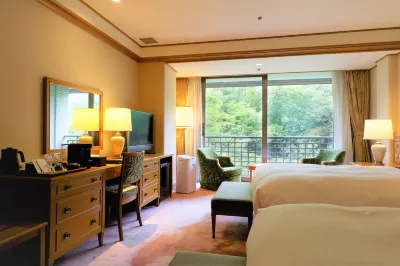
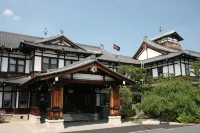
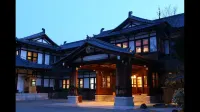
99+
Hotel near Nara
"A hotel full of history as it has been the chosen venue for important events in Nara. Many celebrities had stayed in this hotel including Albert Einstein. Tried the rice lager at the tea house which is very good tgough some may find it not strong enough. The vicinity is nice. It is within waljing distance of the famous Nara Park. The room is spacious. Shuttle bus service to Nara station is excellent. Very helpful staff. An enjoyable stay indeed!"
Very Good
357 reviews
9.3/10
1 night
From NZD 281

You Might Like
Nara Hotels with BreakfastNara Hotels with Twin RoomNara Hotels with 1 Double BedNara Hotels with Swimming PoolNara Hotels with Free Cancellation


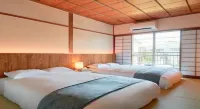
85
Hotel near Nara
With a stay at this vacation home in Nara (Naramachi), you'll be within a 5-minute drive of Nara Park and Todaiji Temple. This vacation home is 7.1 mi (11.4 km) from Nara Kenko Land and 0.1 mi (0.2 km) from Gango-ji Temple.
Make yourself comfortable in this vacation home, featuring a kitchenette with a refrigerator and a stovetop. A 75-inch flat-screen television with digital programming provides entertainment, while complimentary wireless internet access keeps you connected. Conveniences include a microwave and a coffee/tea maker.
Excellent
9.6/10
1 night
From NZD 962
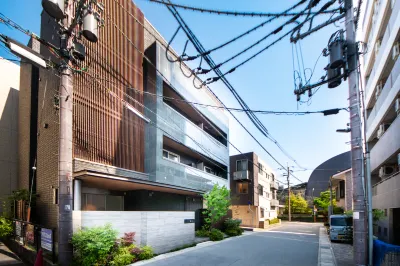
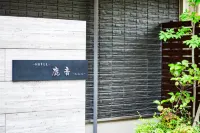

79
Hotel near Nara
"Very good reviews, very close to JR Nara Station, convenient to check in. The room is also very large. You can wash, dry, take a bath, and heat meals in the room. It is a good place to rest."
41 reviews
9.1/10
1 night
From NZD 104


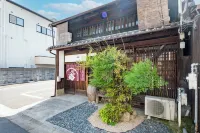
59
Hotel near Nara
Ranjatai offers accommodations in Nara, 1.2 miles from Nara Station and 13 miles from Iwafune Shrine. This property offers access to a balcony, free private parking, and free Wifi. Shijonawate City Museum of History and Folklore is 15 miles away and Aeon Mall Shijonawate is 16 miles from the vacation home.
The air-conditioned vacation home consists of 2 bedrooms, a living room, a fully equipped kitchen with a microwave and a kettle, and 1 bathroom with a bidet and a hair dryer. The vacation home offers bed linen, towels, and laundry service.
Guests can relax in the garden at the property.
Hanazono Rugby Stadium is 15 miles from the vacation home, while Nippon Christ Kyodan Shijonawate Church is 15 miles from the property. Itami Airport is 34 miles away.
8.7/10
1 night
From NZD 344

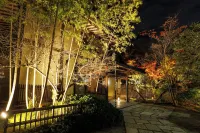

99+
Hotel near Nara
"Neat and clean. It's right next to Nara Park. Breakfast and dinner are exquisite. You can hear the noise of cars passing by in the room facing the street at night and in the morning. The service staff is very polite and delivers it to the gate. There is a small indoor bathing pool and tatami mats. Very suitable for family or friends traveling"
Outstanding
23 reviews
9.4/10
1 night
From NZD 574


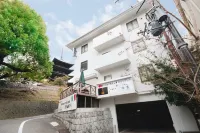
99+
Hotel near Nara
"The location of the area is very good. It is next to Ruocao Park. In addition to self-check-in, it makes people feel that the head is big. The test of English is good. The price and service match. Health is also OK."
32 reviews
8.7/10
1 night
From NZD 79
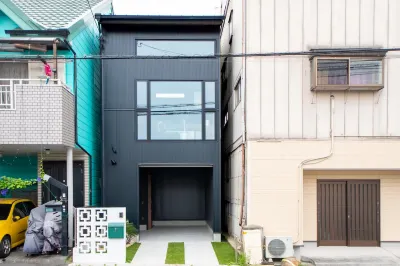


43
Hotel near Nara
With a stay at this vacation home in Nara (Naramachi), you'll be within a 5-minute drive of Nara Park and Todaiji Temple. This vacation home is 6.4 mi (10.3 km) from Nara Kenko Land and 0.6 mi (0.9 km) from Gango-ji Temple.
Limited parking is available onsite.
Make yourself comfortable in this vacation home, featuring a kitchen with a stovetop and a microwave. A 36-inch flat-screen television with digital programming provides entertainment, while complimentary wireless internet access keeps you connected.
9.0/10
1 night
From NZD 211
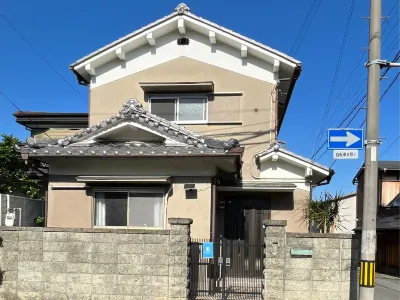


44
Hotel near Nara
Nara Park Blue Sky offers accommodations in Nara, 1.6 miles from Nara Station and 12 miles from Iwafune Shrine. This villa offers free private parking, a shared kitchen, and free Wifi. The accommodation features private check-in and check-out and a tour desk for guests.
The air-conditioned villa consists of 3 bedrooms, 3 living rooms, a fully equipped kitchen with a microwave and a kettle, and 1 bathroom with a hot tub and slippers. A flat-screen TV with streaming services is offered. For added privacy, the accommodation features a private entrance.
Hanazono Rugby Stadium is 14 miles from the villa, while Nippon Christ Kyodan Shijonawate Church is 15 miles from the property. Itami Airport is 34 miles away.
Excellent
9.7/10
1 night
From NZD 423
Latest Reviews for Nara hotels
See all
Explore genuine reviews and ratings from real travellers to find the perfect accommodation for your needs.
9.5/10
Outstanding
KKinglumLoved the hotel!! It’s in the center of nara city
It’s 5 mins walk to the nara shopping area, 5mins walk to the nara park there is deer walking around the hotel in the morning
There is free morning city walk tour at 7:00-8:00 with local guide; the bicycle is free
The view of the pond is nice the service is great!! 5stars to everything
The room is spacious and the bed is comfortable
They have drink lounge for free use with unlimited snacks; fruit juice, sake, beer, wine from
15:00pm-2:00am
Really recommend everyone that travels to nara city to stay at this hotel!!
The only downside of this hotel is the breakfast only provides japanese style food ; grill fish and onigiri
The onigiri is huge, grill fish and miso soup is cold
I wish they can make the onigiri smaller so
We can taste more flavors
And hope that they can provide a bakery corner for people who doesn’t like to eat fish
Otherwise we loved the hotel and want to go
Back again!!
Ps: there is not parking space so we need to park at the coin parking costs us 2400¥ /night
9.4/10
Outstanding
XXiaDongThe hotel locate just beside Nara station, bus terminal is also steps away, very convenient. The room size is very comfortable. Staffs are all friendly and handle check in fast. Check out is via self service machine which took only 2 mins.
Every floor has facility room with auto laundry machine, oven and etc, which is very helpful for multiple days stay. Breakfast has various choices while tastes average to me. Overall a very satisfied stay and thanks a lot to all hotel staffs.
9.4/10
Outstanding
GGuest UserBest hotel I stopped in during my whole time in Japan. Everything about this Japanese hotel was excellent. The hotspring was incredible, the free snacks, post Onsen ice Lolly's and noodles went above and beyond. Absolutely loved it.
9.3/10
Very Good
GGuest UserNara Treasure Inn!! If you like the atmosphere of a Japanese family hotel and don't mind a small room, this one is really suitable for a solo traveler. The room is quieter and cleaner, with tatami mats, small but complete. The bath on the first floor is a private bath reserved by time slot, very hot, so more than 40 minutes of time slot is enough.
The front desk brother on duty at night is handsome and ok in English, and is very helpful. For example, he let me take the last minute of the remaining bathroom time slot (it was already ten minutes later when I arrived), take a bath and stroll around the small streets. It is also close to the commercial street (but everything is closed at night), and the surrounding environment and hotel atmosphere are great.
9.2/10
Very Good
CCarols628The hotel had no staff, a dinosaur or an anime character will speak to you for check in and check out..haha. You just scan your passport and enter some basic information, then you can get the room key. The room size is great for 2 people and all suitcases could be fully opened. If you want to store your luggage after check out, also need to press and pay at the store luggage machine by yourself. That was good for teenagers or adults for staying. If elderly, which not familiar for electric device, not recommend for staying.
9.1/10
SShin-Woei FannThe location of this hotel is pretty well, the Kintetsu Nara station is just across the street and the main station of the Nara buses is just in front of the door.
I would not suggest foreign people to go to the East shopping street nearby for food since there are many restaurant closed and hard to get good meals.
As the biggest chain hotel, this Tokoyo inn also has the convenient check in and out protocols and has staff can speak fluent English.
The only obvious problem is the noise can always come in through the closed window. I lived in 4th floor but could still hear clearly when people down in the back street talking during the late night,
8.9/10
GGuest UserIt's close to the station and on the main street, so there's a Gusto next to the hotel and a convenience store right nearby, which is convenient. I stayed for three nights, and the room was quiet, very clean, and comfortable. The staff were also very polite and greeted me in a pleasant manner. I'd like to stay with you again. Thank you for your hospitality.
8.8/10
Wwee teeBooked this hotel through Trip which was a godsend. The hotel that I booked through ******* was screwed up big time by ******* because the hotel didn't receive the reservation apparently. ******* was not helpful with the relocation (even thought there were availability at other hotels), claiming the hotel class are different from the one I booked. Anyways this hotel is convenient and clean, only thing that I disliked was the site mentioned double bed BUT only can accommodate 1 person!? Ended we have to pay additional ¥3k for the 3rd person (my youngest daughter) for 2 rooms. 1 room for myself and the other for both daughters because the manager was adamant about the 1 room per person, however after paying the additional ¥3k he was ok with 2 persons in a room. Didn't make sense unless I was explained it is some government regulations to allow only 1 double bed room for 1 person
8.4/10
GGuest UserAlthough the history of the homestay is a bit old, the supporting infrastructure is not bad. It is a very charming Japanese tatami accommodation. It is good to experience it for one night. You need to buy towels, toothbrushes and other things in the hotel by yourself. They provide them here. It seems to be about 100 yen (I forgot the exact price). In addition, the light in the room I stayed in needs to be pressed for a long time, otherwise the light cannot be turned on. (Room number is 213or203) I don’t know how the quilt is laid. The liner will run out of the sheets, and it is a bit dirty, and the blood stains are not cleaned. It seems that the luggage can only be placed downstairs? Because shoes are not allowed to be worn upstairs, which is not very convenient. The shower and toilet are on the first floor. There is a sink on the second floor
7.9/10
GGuest UserFirst of all, the service staff is warm and thoughtful, and the attitude is amiable! Tell the precautions, the hotel is clean and hygienic, and the quilt is covered by yourself. The bathroom in the bath is particularly clean. Every guest is very conscious. Try to control yourself and not disturb others. It is really great!
FAQs About Hotels in Nara
What popular hotels in Nara have parking?
If you're planning on driving to Nara, why not stay at
AB Hotel Nara,Hotel PagodaandSmile Hotel Nara
? These are all popular hotels with parking lots.
At which popular hotels in Nara can I try local foods?
Those who like trying local foods might want to consider staying at
Nara Hotel,Centurion Hotel Classic Nara StationandHenn na Hotel Nara
. There are lots of famous restaurants serving local dishes near these hotels.
When travelling to Nara, which hotels have pools?
Summer is a great season to take your kids or family on a trip to Nara.
Onyado Nono Nara Natural Hot Spring,Ando Hotel Nara Wakakusayama -Dlight Life & Hotels-andAB Hotel Nara
are popular hotels with pools.
Of all the hotels in Nara, which hotels have the highest user ratings?
When travelling to Nara for the first time, many travellers find it difficult to choose a hotel to stay in. According to Trip.com data,
Kotonoyado Musashino, THE KAKU and Onyado Nono Nara Natural Hot Spring
are popular hotels with high ratings, making them good choices for your trip.
At what hotels in Nara can I try local breakfast foods?
A delicious breakfast is a great way to kick start your day. At
Nara Hotel,Iroha Grand Hotel Kintetsu Nara EkimaeandJW Marriott Hotel Nara
, guests can enjoy Nara-style breakfasts.
When going on a business trip to Nara, which hotels are the most popular with business travelers?
When it comes to business trips, choosing a hotel with convenient transportation links is important to many guests.
Nara Royal Hotel, Hotel Pagodaand Onyado Nono Nara Natural Hot Spring
have convenient transportation links and inexpensive prices. Consider staying at one of these hotels during your trip.
What popular hotels have non-smoking rooms in Nara?
Many guests care about the quality of the rooms they stay in and want to ensure that their rooms have fresh, clean air.
Iroha Grand Hotel Kintetsu Nara Ekimae,Daiwa Roynet Hotel Nara Natural Hot SpringandCenturion Hotel Classic Nara Station
are all popular hotels in Nara with non-smoking rooms.
In Nara, what popular hotels have free Wi-Fi?
When staying at a hotel, Internet access is important for both vacationers and business travellers.
Piazza Hotel Nara, Nara Hotel and JW Marriott Hotel Nara
are all popular hotels in Nara with free Wi-Fi.
What are the most popular hotels in Nara?
Whether you're travelling for business or going on holiday, there are many popular hotels to choose from in Nara.
Hotel Nikko Nara, Henn na Hotel Nara and Centurion Hotel Classic Nara Station
are all popular hotels to stay at.
What are some popular discounted hotels in Nara?
There are many popular hotels in Nara. You can find information on discounts and deals here: Trip.com Deals and Promo Codes.
In Nara, which popular hotels have gyms?
Based on Trip.com user ratings,
Nara Park Hotel,JW Marriott Hotel NaraandNara Royal Hotel
are highly rated hotels with gyms.
Nara Hotels Information
| Highest Price | NZD 3,515 |
|---|---|
| Lowest Price | NZD 43 |
| Number of Reviews | 7,594 |
| Total Properties | 150 |
| Average Price (Weekdays) | NZD 430 |
| Average Price (Weekends) | NZD 485 |